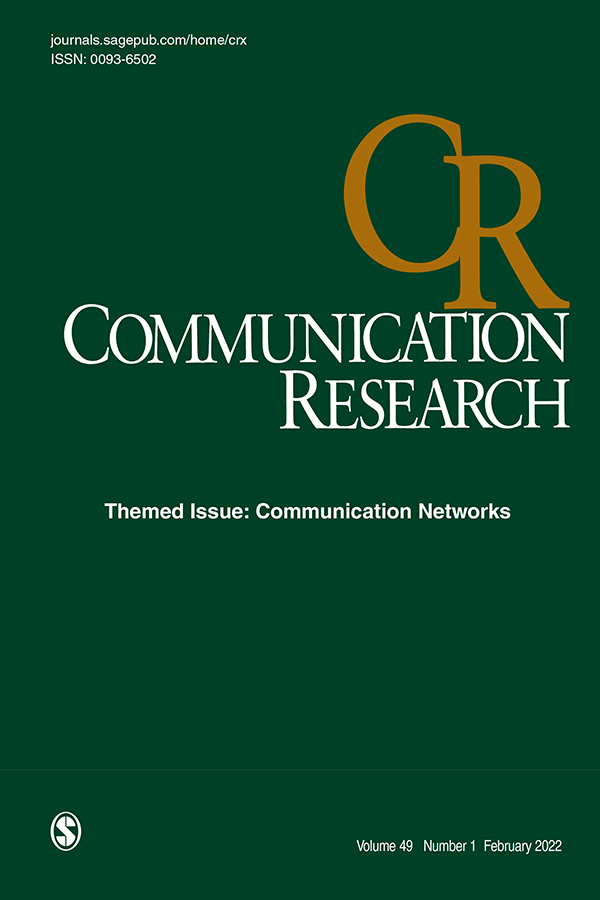当意见在没有说服的情况下两极分化:态度-意见收敛与解耦的动力学建模
IF 3.2
1区 文学
Q1 COMMUNICATION
引用次数: 0
摘要
数字媒体经常被指责为加深社会分歧的罪魁祸首,因为它培育了强化偏见的回音室。然而,媒体上可见的两极分化的观点可能并不一定表明隐藏信仰的更深层次的分裂,这通常被认为是由说服驱动的。相反,公众意见的两极分化可以从上下文动态中出现,这种动态将私人态度与表达的意见分离开来。本研究通过一个基于主体的模型(ABM)来探索这些情况,该模型将态度形成的动力学与“沉默螺旋”理论相结合。模拟显示,即使态度两极分化的程度保持适度,观点也会因微妙的环境变化而分化或趋同,比如社会联系或精英影响力的变化。此外,研究结果表明,社会联系的增加减弱了态度和观点的两极分化,因为更多地接触不同的观点会减轻对反对观点的排斥影响。这些发现强调了公众舆论可能无法可靠地反映民众的真实情绪,从而产生了一种更分裂的社会的误导性印象,同时表明增加的连通性可以帮助缓解这种分歧。本文章由计算机程序翻译,如有差异,请以英文原文为准。
When Opinions Polarize Without Persuasion: Modeling the Dynamics of Attitude-Opinion Convergence and Decoupling
Digital media is often blamed for deepening societal divides by fostering echo-chambers that reinforce biases. However, the polarized opinions visible on the media may not necessarily indicate deeper fragmentation of hidden beliefs, which is often assumed to be driven by persuasion. Instead, public opinion polarization can emerge from contextual dynamics that decouple private attitudes from expressed opinions. This study explores these conditions through an agent-based model (ABM) that integrates the dynamics of attitude formation with the ‘spiral of silence’ theory. The simulations reveal that opinions can polarize or converge due to subtle contextual changes—such as changes in social connectivity or elite influence—even when the degree of attitude polarization remains moderate. Furthermore, the findings show that increased social connectivity attenuates the polarization of both attitudes and opinions, as greater exposure to diverse perspectives mitigates the effects of repulsion toward opposing views. These findings highlight how public opinions may fail to reliably reflect the true sentiments of the population, creating a misleading impression of a more fractured society while suggesting that increased connectivity could help mitigate such divisions.
求助全文
通过发布文献求助,成功后即可免费获取论文全文。
去求助
来源期刊

Communication Research
COMMUNICATION-
CiteScore
17.10
自引率
0.00%
发文量
20
期刊介绍:
Empirical research in communication began in the 20th century, and there are more researchers pursuing answers to communication questions today than at any other time. The editorial goal of Communication Research is to offer a special opportunity for reflection and change in the new millennium. To qualify for publication, research should, first, be explicitly tied to some form of communication; second, be theoretically driven with results that inform theory; third, use the most rigorous empirical methods; and fourth, be directly linked to the most important problems and issues facing humankind. Critieria do not privilege any particular context; indeed, we believe that the key problems facing humankind occur in close relationships, groups, organiations, and cultures.
 求助内容:
求助内容: 应助结果提醒方式:
应助结果提醒方式:


